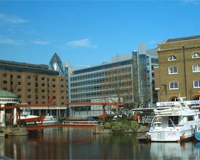 The Supreme Court has allowed a valuation officer’s appeal and ruled that two separate floors in the same building are not a single hereditament for ratings purposes. The decision, clarifying the law following earlier rulings to the contrary, will affect the outcome of hundreds of other cases raising the same question.
The Supreme Court has allowed a valuation officer’s appeal and ruled that two separate floors in the same building are not a single hereditament for ratings purposes. The decision, clarifying the law following earlier rulings to the contrary, will affect the outcome of hundreds of other cases raising the same question.
Lords Neuberger, Sumption, Carnwath, Toulson and Gill unanimously found that the non-domestic premises on the second and sixth floors of the office building Tower Bridge House, St Katharine’s Way, E1 – both occupied by accountant Mazars – constitute more than one hereditament for the purposes of the rating list.
Both the Upper Tribunal (Lands Chamber) and the Court of Appeal found that they should be assessed as a single hereditament for ratings purposes, with a rateable value of just over £1m. As the Upper Tribunal found that there should be no fragmentation allowance, Mazars had no financial stake in the outcome of proceedings, and was not represented at the Supreme Court.
Giving the court’s decision, allowing the VO’s appeal, Lord Sumption said that the Upper Tribunal (Lands Chamber) had wrongly “applied neither a geographical test nor a functional one”.
Referring to the then-president, George Bartlett, who gave the tribunal’s decision, Lord Sumption said: “He declined to ask himself whether the possession of both storeys was necessary to the enjoyment of either, nor whether they could be let separately, nor whether they intercommunicated (the answers would clearly have been no, yes and no respectively). He quite rightly regarded the way in which a particular occupier chose to use the premises together as irrelevant. Yet at the same time he considered that when separate premises were located in the same building, it was wrong to apply a geographical test either.”
Finding himself unable to accept that reasoning, Lord Sumption continued: “I am unable to accept his reasoning. It introduces an arbitrary distinction between horizontal and vertical separation which responds to no discernible principle. In order to pass from level two to level six, it is necessary to leave the demised premises on level two, enter the common parts over which Mazars had a licence but no right of possession, and to ascend in a lift to the common parts on level six before entering the other premises. This is no different, either geographically or functionally, from leaving a building which is exclusively occupied by the ratepayer, crossing land belonging to someone else and entering another building under the same occupation.”
Blake Penfold, a consultant on business rates at GL Hearn, said that Lord Sumption’s judgment referred to the history of rates as a tax on property, not on persons and gives some “useful clarity to the law”, aligning the position in England and Wales with that of Scotland, following “surprising” earlier decisions in the case.
He said: “The test of what constitutes a hereditament is geographic and the court considered that it is necessary to be able to draw a line round a single hereditament whether on a vertical or horizontal plan and that intervening space in a different occupation defeated the test of what should be a single hereditament. The Supreme Court also took the view that where there is no ‘direct intercommunication’ between two parts of a property those two parts could not form a single hereditament unless one could not be let without the other – that is to say the two parts are functionally essential one to the other.
“The judgement will need some careful analysis but does, in effect, appear to support the valuation office’s existing interpretation of the law, which is that spaces that are not adjacent and have no direct intercommunication should be treated as separate hereditaments, even if they are in the same occupation, unless there is clearly functionally essential link between the two – that is to say one space could not be let without the other for the purpose for which they used.”
He added: “It is in some ways surprising that both the Upper Tribunal (Lands Chamber) and the Court of Appeal viewed the two floors at Tower Bridge House as a single hereditament and this judgment clearly reverses both those decisions.
“There will be a number of cases which can now be settled as the law has been clarified. The Valuation Tribunal for England has approximately 500 cases stayed pending this decision and the majority of these should now be capable of being settled. There will be a number of cases where ratepayers had sought a merger of non-adjacent floors (or other parts of buildings) and, on an initial reading of this judgement, those cases will not now succeed.”
Woolway v Mazars Supreme Court (Lords Neuberger, Sumption, Carnwath, Toulson and Gill) 29 July 2015
Timothy Morshead QC and Daniel Kolinsky QC(Instructed by HMRC Solicitors Office) for the appellant
David Forsdick QC (Instructed by The Government Legal Department) advocate to the court









